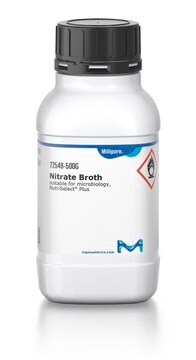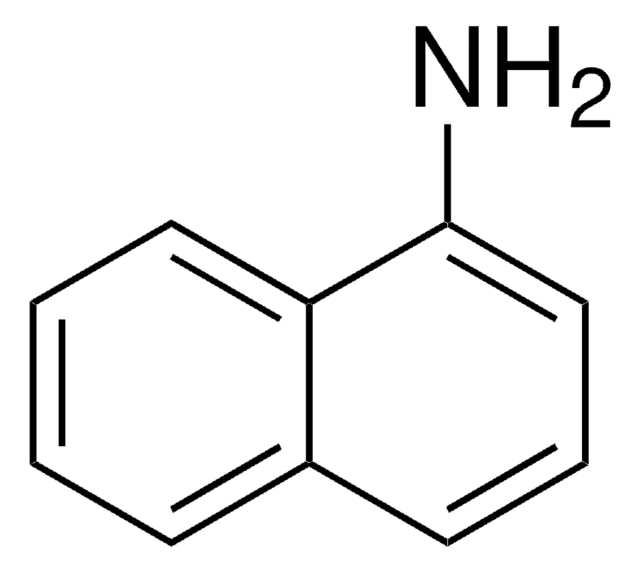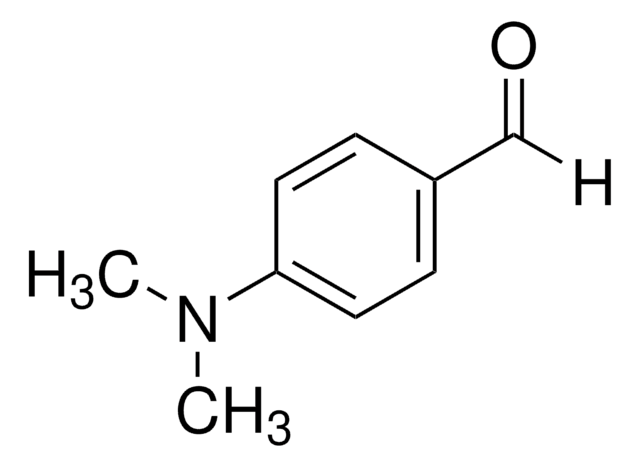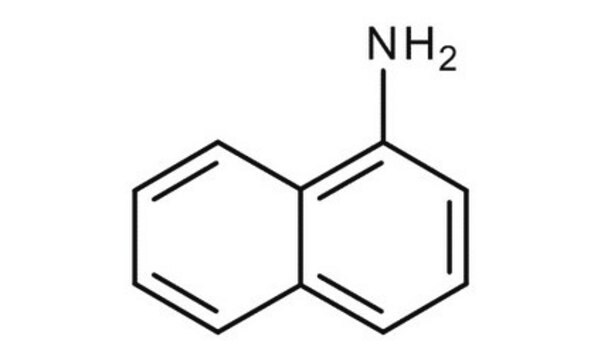38497
Nitrate Reagent A
suitable for microbiology
Synonym(s):
1-Naphthylamine solution
About This Item
Recommended Products
product line
BioChemika
Quality Level
shelf life
limited shelf life, expiry date on the label
composition
acetic acid 5 N, 1000 mL
α-naphthylamine, 5 g
technique(s)
microbe id | metabolite detection: suitable
application(s)
agriculture
clinical testing
environmental
food and beverages
pharmaceutical
microbiology
suitability
Enterobacter spp.
Neisseria spp.
anaerobic bacteria
bacteria
InChI
1S/C10H9N/c11-10-7-3-5-8-4-1-2-6-9(8)10/h1-7H,11H2
InChI key
RUFPHBVGCFYCNW-UHFFFAOYSA-N
General description
Not finding the right product?
Try our Product Selector Tool.
Signal Word
Danger
Hazard Statements
Precautionary Statements
Hazard Classifications
Eye Dam. 1 - Skin Corr. 1B
Storage Class Code
8A - Combustible corrosive hazardous materials
WGK
WGK 1
Flash Point(F)
Not applicable
Flash Point(C)
Not applicable
Personal Protective Equipment
Choose from one of the most recent versions:
Already Own This Product?
Find documentation for the products that you have recently purchased in the Document Library.
Customers Also Viewed
Articles
Vibrio Detection
On the Trail of Campylobacter
For microbiologists the most fundamental stain was developed in 1884 by the Danish bacteriologist Hans Christian Gram.
Sigma-Aldrich.com presents an article concerning Differentiation of Escherichia coli from coliforms.
Protocols
US EPA Method 8270 (Appendix IX): GC Analysis of Semivolatiles on Equity®-5 (30 m x 0.25 mm I.D., 0.50 μm)
Our team of scientists has experience in all areas of research including Life Science, Material Science, Chemical Synthesis, Chromatography, Analytical and many others.
Contact Technical Service












